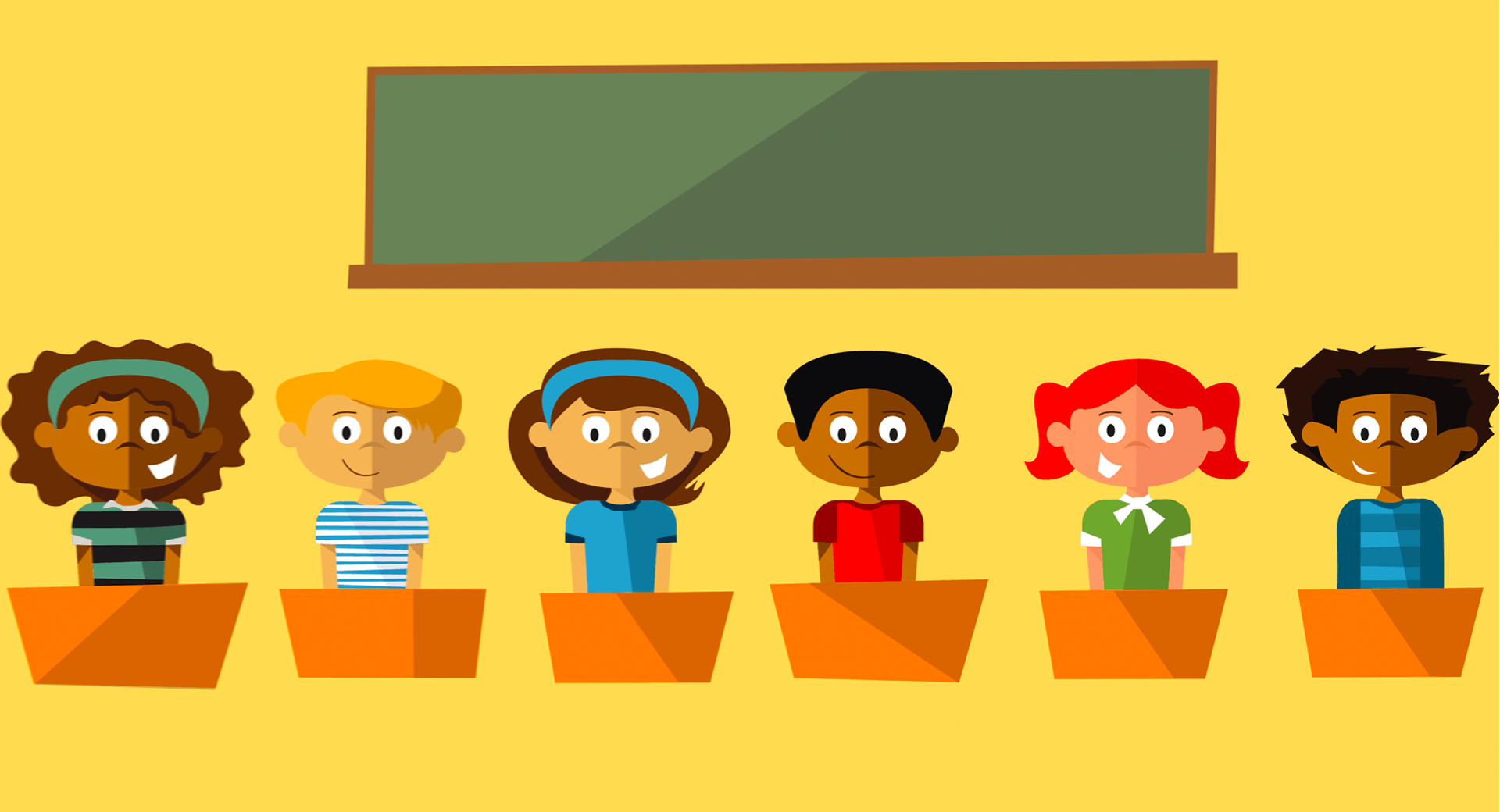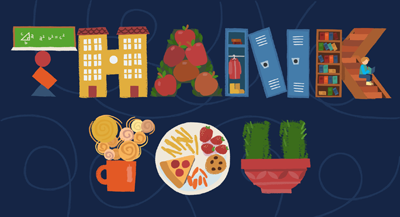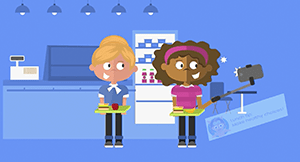
It’s the last day of summer break. You walk the halls, ducking your head into classrooms as you go. Each room looks ready for the year: inspiring quotes on walls, names on desks, chairs perfectly arranged. Every room except one, that is. This particular room has boxes of books, containers of art supplies, and furniture pushed against the wall. You smile and move on, never doubting that this room will be one of the most creative, functional, and beloved rooms in just a few short days. It always is.
How will it get there? The students will make it happen.
Why get students involved?
Traditional teaching methods are evolving. Gone are the “chalk talk” days, where rows of desks facing the front of the classroom made sense.
Instead, project-based learning, flipped classrooms, and a prevalence of technology are the norm. Studies show classroom design affects student learning, so it’s important to design a space that matches 21stcentury learning styles. And who understands what they need better than the kids learning there?
That is the logic behind user experience (UX) design and an important reason why it’s beneficial for students to play a role in designing their classrooms.
User experience (UX): the overall experience of a person using a product, especially in terms of how easy or pleasing it is to use.
In addition to students getting a say, student-designed classrooms come with other benefits. Tiffany Wycoff, a teacher and co-founder of an education consultancy, sums it up: “I’ve seen this in both my own classroom experience and my work with other schools… Setting up the room together noticeably builds a positive class culture that touches on the five hallmarks of effective learning practice: personalization, agency, audience, creativity, and connectivity.”
There are also benefits for teachers, which begin before the school year starts. Rather than preparing their classrooms, teachers can use the final weeks of break to finalize lesson plans and prepare for the year. Three cheers for bonus prep time!
How can students get involved?
On the first day of school, teachers welcome students into a blank-slate classroom—and tell the young learners their first challenge will be designing their room. Emily Fintelman, a teacher in Melbourne whose students design her classroom, gives this recommendation:“Discuss together with your class what both the teacher and the individual students think a learning environment needs… If you frame this conversation and your questions carefully, you will steer the conversation to a deep level. ‘What do you think helps you learn best in a classroom?’ rather than ‘What do you want in a classroom?’ will avoid the popular yet unrealistic dream of classroom rollercoaster or jumping castle.”

Here are some talking points to kickstart meaningful conversations with students:
Zoning: What will go on in the classroom? How can you set up the space to accommodate all of these activities? We love the metaphors researchers in Australia used to describe modern learning spaces:
Campfire: a traditional setup, where students face the teacher
Watering hole: a place for informal discussions
Cave: a quiet place for working alone
Mountaintop: where students present their work
This is just one example of the types of zones students and teachers may want to consider.
Seating: How many people at a table is too many? Do students want comfy chairs for reading? Or seats near outlets for working on their laptops? How do they want to sit when working as a whole group—would a giant circle facilitate better communication?
Decorations and colors: What decorations or quotes would be inspiring? Does the class want to brainstorm a motto and display it on the wall? Teachers and students can also discuss the effects of colors on learning and apply what they learn to the design of their space.
Lighting and sound: What kind of lighting would be best? If there will be a cave or reading fort, how should it be lit up? Would music or a sound machine be helpful for concentration?
Classroom rules: How would students like to help write the rules? Rather than asking kids to adhere to a preset list of guidelines, teachers can involve students in creating them. When kids understand the “why” behind rules, they’re more likely to follow them. This is also a great time to talk about online safety and involve students in creating their class’s digital contract.
When the brainstorming and planning are complete, kids can work together to bring their vision to life moving furniture and setting up their space. Teamwork on the first day of school? Check.✅

Teachers may even want to consider hosting an open house or inviting kids to come along to parent-teacher conferences. Students will be excited to show their parents the room they helped design!
The Process Is Ongoing
A key facet of UX design is its ongoing nature. No good UX designer would create a design, hand it over to users, and call it quits. On the contrary, they conduct user testing to find out what works and what doesn’t. Then they make changes and try again. Encourage teachers to emphasize to students that they’ll be using this same process in the classroom. Just because students choose a setup on day one doesn’t mean they’re stuck with this arrangement throughout the year. Regular evaluation won't simply improve the classroom setup. It will also teach students the importance of continuous trial and error and striving for improvement.Follow-Up Resources:
Psychology and classroom designScience-backed tips for designing classrooms
An interactive Future Classroom Lab floorplan
Tips for turning your library into a high-tech learning center
WHAT'S NEXT FOR YOUR EDTECH? The right combo of tools & support retains staff and serves students better. We'd love to help. Visit skyward.com/get-started to learn more.

|
Lauren Gilchrist Blogger, Traveler, and Video Talent |
Lauren enjoys visiting school districts and spreading the word about creative, non-traditional approaches to universal challenges. Follow her for on-the-scene education journalism (with a little fun sprinkled in).




